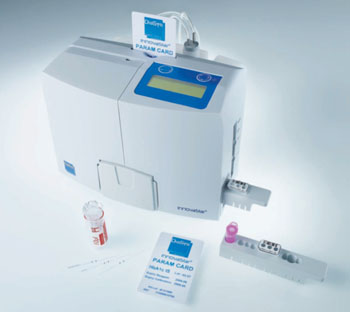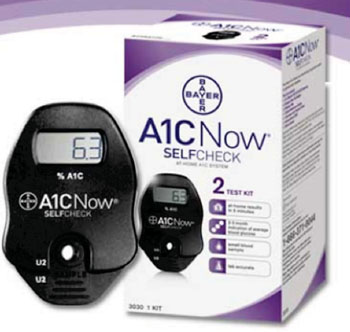Routine Blood Glucose Measurements Can Accurately Estimate HbA1c
By LabMedica International staff writers
Posted on 06 May 2014
Glycated hemoglobin or HbA1c is the standard measurement for assessing glycemic control over time in people with diabetes and blood levels of HbA1c are typically measured every few months in a laboratory.Posted on 06 May 2014
The relationship between HbA1c and average glucose levels could determine whether HbA1c could be expressed and reported as average glucose in the same units as used in self-monitoring which could increase individuals' motivation to improve diabetes control.
Scientists at the University of Virginia (Charlottesville, VA, USA) working with those at Sanofi-Aventis Deutschland GmbH (Frankfurt, Germany) developed a data-based model that accurately estimates HbA1c using self-monitored blood glucose (SMBG) readings. The computer algorithm they developed was based on a training data set drawn from 379 subjects and then evaluated for accuracy on an independent test data set. The average HbA1c level was 7.6% (± 1.1%), with minimum and maximum values of 5.2% and 12.2%, respectively.
A conceptually new, clinically viable procedure was developed for real-time tracking of average glycaemia from self-monitoring data. The average glucose tracing can then be converted into running estimates of HbA1c, which can be presented to the patient daily. The computational demands of the procedure are low and therefore readily implementable into devices with limited processing power, such as home SMBG meter.
The procedure, tracking average glycaemia and HbA1c in real time, could provide valuable assistance to the daily optimization of diabetes control. The procedure is not intended as a substitute for laboratory assessments of HbA1c and it should be viewed as a surrogate measure that allows convenient tracing of average glucose, readily implementable in a point-of-care SMBG device.
Satish Garg, MD, a professor of medicine and pediatrics at the University of Colorado (Denver, CO, USA) said, “Patients are used to a HbA1c result from their doctor visits, and this study highlights simple estimated HbA1c values from SMBG data. This may become an important tool for improved patient self-management.” The study was published on April 23, 2014, in the journal Diabetes Technology & Therapeutics.
Related Links:
University of Virginia
Sanofi-Aventis Deutschland GmbH
University of Colorado










 (3) (1).png)




